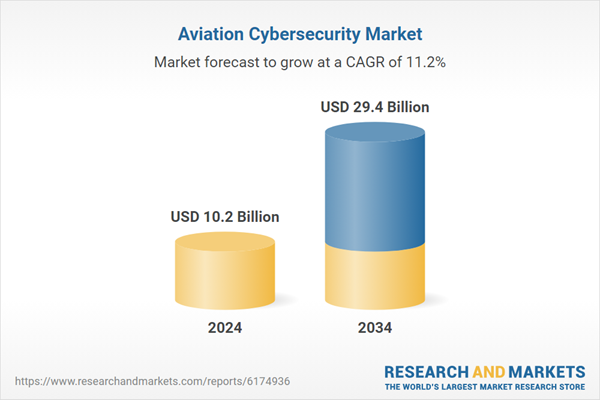The growth is driven by the growing cyber threats as its systems become more interconnected. Regulatory bodies demand strict security protocols; aircraft systems, airports, and airline operations are increasingly relying on connected technologies that expose new vulnerabilities. Ransomware and malware incidents grow dramatically, pushing operators to adopt sophisticated cybersecurity tools to protect data, operations, and passenger safety. As commercial aviation and air traffic expand, complexity rises, creating more entry points for attackers. Regulatory compliance from domestic civil aviation authorities to international organizations requires encryption, intrusion detection, identity management, and continuous monitoring. Service providers and solution developers must evolve to meet both safety and compliance demands in a fast-changing threat landscape.
The services segment held a 48.3% share in 2024, dominating due to the rising need for expert-driven solutions amid the growing complexity of threats. Airlines, airports, aircraft OEMs, and aviation service providers increasingly rely on third-party vendors to handle managed security services, including 24/7 threat monitoring, incident response, compliance audits, risk assessments, and cybersecurity training. With aviation operations becoming more data-intensive and interconnected, outsourcing these services allows organizations to access advanced threat intelligence, reduce internal overhead, and stay aligned with rapidly evolving global regulations.
The on-premises segment held a 43.5% share in 2024 as many aviation players prefer to retain full control over security operations and critical systems. For large airports, air navigation service providers, and aerospace OEMs, managing infrastructure internally helps ensure end-to-end visibility, custom configuration, and better responsiveness to sector-specific compliance requirements. These entities often host proprietary systems, legacy equipment, and sensitive passenger or national security data that must be protected under strict confidentiality policies.
U.S. Aviation Cybersecurity Market was valued at USD 3.5 billion in 2024, underpinned by the presence of over a thousand commercial airports, stringent cybersecurity mandates, and the expanding use of connected aircraft technologies. Federal regulations and industry-specific compliance frameworks set by authorities such as the FAA, TSA, and CISA mandate rigorous protection of communication networks, air traffic management systems, and passenger information databases.
Major firms in the Aviation Cybersecurity Market, such as IBM Corporation, Honeywell International Inc., Airbus, Lockheed Martin, Northrop Grumman, Raytheon Technologies, BAE Systems, Thales Group, Leidos, and Cisco Systems, play significant roles in developing, deploying, and maintaining secure architecture across the aviation sector globally. Companies in the Aviation Cybersecurity Market are pursuing several key strategies. They emphasize investment in AI-powered threat detection, anomaly mining, and predictive analytics to stay ahead of cyberattacks. They forge partnerships with regulatory bodies and aviation organizations to ensure compliance frameworks are built into their solutions.
Comprehensive Market Analysis and Forecast
- Industry trends, key growth drivers, challenges, future opportunities, and regulatory landscape
- Competitive landscape with Porter’s Five Forces and PESTEL analysis
- Market size, segmentation, and regional forecasts
- In-depth company profiles, business strategies, financial insights, and SWOT analysis
This product will be delivered within 2-4 business days.
Table of Contents
Companies Mentioned
The key companies profiled in this Aviation Cybersecurity market report include:- Airbus
- BAE Systems
- Honeywell International Inc.
- IBM Corporation
- Thales Group
- North America
- Cisco Systems
- Lockheed Martin
- Northrop Grumman
- Raytheon Technologies
- Leidos
- Optiv Security
- Aviation SecOps
- Europe
- Rohde & Schwarz
- SITA
- The Boeing Company
- Cyviation
- Darktrace
- Asia Pacific
- Wattlecorp Cybersecurity Labs LLP
- Dionach
Table Information
| Report Attribute | Details |
|---|---|
| No. of Pages | 170 |
| Published | September 2025 |
| Forecast Period | 2024 - 2034 |
| Estimated Market Value ( USD | $ 10.2 Billion |
| Forecasted Market Value ( USD | $ 29.4 Billion |
| Compound Annual Growth Rate | 11.2% |
| Regions Covered | Global |
| No. of Companies Mentioned | 23 |









